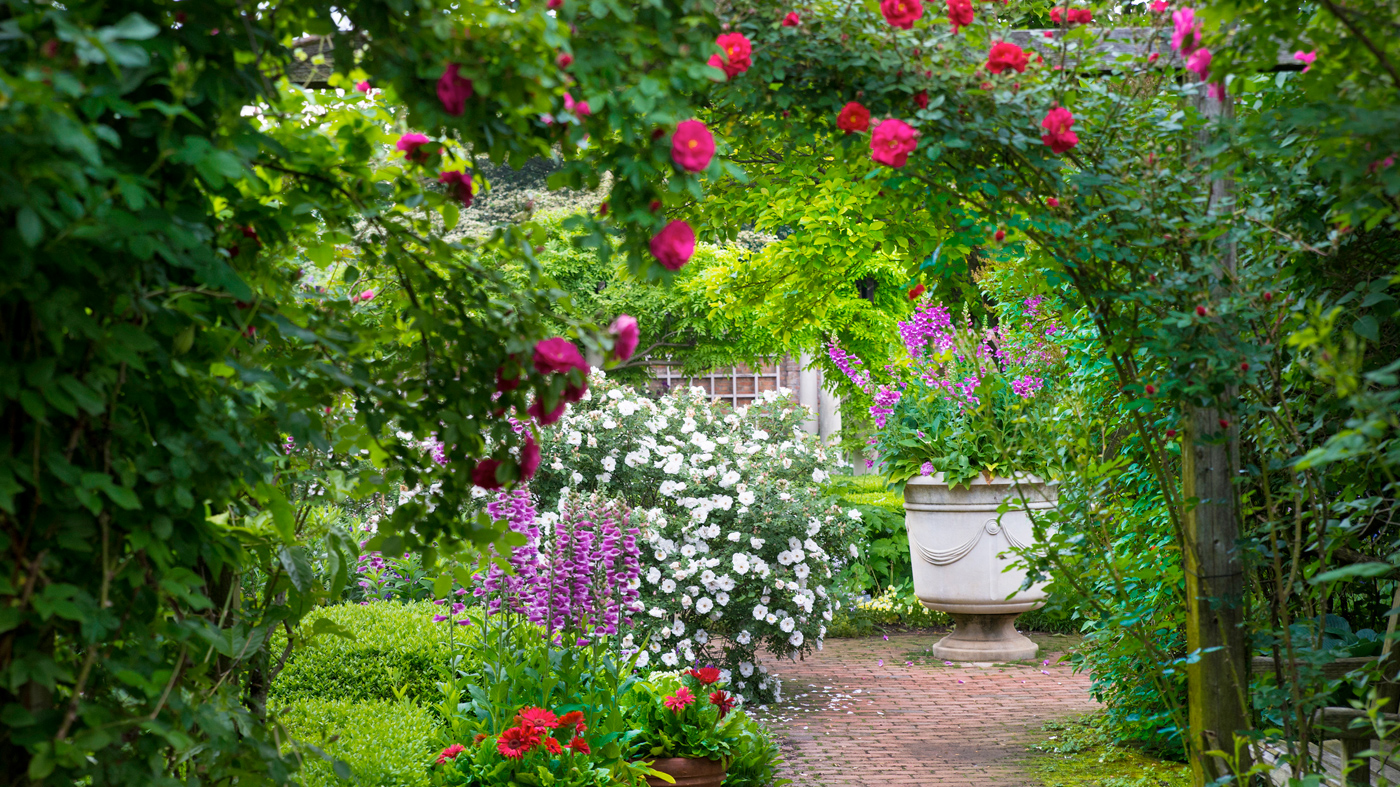

Celebrating Pride Month
Viva Vita
Pride Month is a time to honor the history and voices of the LGBTQIA+ community—which makes me, a plant scientist and avid gardener, think about Vita Sackville-West, one of the most influential garden designers of her time.

Vita Sackville-West (Image courtesy of Wikimedia Commons)
Sackville-West (1892-1962) is well-known for her close relationship with writer Virginia Woolf; she was also a dedicated gardener and award-winning English author, journalist, and poet.
In June, Pride Month commemorates the anniversary of the Stonewall riots, a turning point for gay and lesbian rights, which occurred in 1969. It is worth remembering, that pioneers like Vita, were challenging attitudes on feminism, sexuality, and gender well before this. I have little doubt if Sackville-West were alive today, she would be a strong voice in our modern conversations about the diversity of sexual orientation, gender, and sex, given how she challenged these labels throughout her life.
As a scientist at the Chicago Botanic Garden, I most often think of Sackville-West when I visit the Thomas English Walled Garden. This garden is inspired by a long history of British gardening style, which includes Sissinghurst Castle Garden, arguably one of the best examples of an English walled garden, that was created by Sackville-West and her husband, Harold Nicolson; they bought the Castle in 1930.
True to the English style, the gardens are divided into different spaces like the rooms in a house. The curated rainbow of colors and the intentional randomness of the plantings remind me of all the things I love about nature. As people explore the gardens, they will often find a peaceful “room of their own” to get away and reflect.

Sissinghurst Castle Garden (Image courtesy of Wikimedia Commons)
Even in the winter months, when gardens are dormant, I will turn to Sackville-West’s book In Your Garden to get inspired. This book is a collection of her articles arranged by month of the year. I find this perfect bedtime reading. Although her descriptions of the tasks and plants of the gardening year are meant to be both practical and useful, she infuses her writing with poetic imagery, providing me with calming images of beautiful gardens and their plants before falling asleep. This is ironic, given that she found most garden writing full of “nauseating phraseology...and sickly vocabulary.”
Beyond her varied talents, what makes Sackville-West so interesting to me is her fascinating and rebellious life—especially by the standards of the early twentieth century. She was equally famous for her gardens, writings, newspaper articles, and poetry, as she was for her scandalous teenage relationship with socialite Violet Trefusis, her open marriage to a bisexual husband, and her suspected relationship with Woolf. Of the many photos of Sackville-West, you will often see her wearing practical and comfortable attire that any sensible gardener would choose, but her choices suggest a preference for gender-neutral clothing that was not common in the day. Hence, knowing what we do of Vita, it is not surprising that she inspired Woolf’s Orlando, a book about an immortal poet who wanders through the centuries, changing their sex and meeting many historical figures.
Another thing that enamors me about Sackville-West is that, despite being a well-established author and writer, she still struggled with self-confidence and even was cited as describing her award-winning poetry as “out of date, rubbishy.” In response to her lack of self-assurance, she retreated to her garden and built herself a library within a tower on the site. This space was her private refuge, where she would lock herself away for hours to write without distraction. Something I believe we could all benefit from.
The “room of her own” that Sackville-West built in her garden mirrors Woolf’s famous work, A Room of One's Own, which argues that women need a space, free from outside social influences, to express their voices. We have come to realize that Woolf’s argument is a universal truth—that many need and deserve spaces free from the oppressive narratives of the dominant culture to find their unique voices.
These spaces are not necessarily physical rooms; they can be a moment in nature or even a spot in the garden. As we strive to be seen and heard in this world, we forget to find the time to see and hear ourselves. This is something I feel is important. Finding space away from outside pressures and the stress of life, and refocusing ourselves and our voices can play a critical role in our mental health, and help us confidently show up in the world as we want to be seen.
For this reason, I am grateful that I have so many spaces here at the Garden that serve this function. And especially grateful for wonderful people like Vita Sackville-West, who inspire these spaces, and remind us that our voices matter.


Celebrating Pride Month at the Garden
Throughout Pride Month in June, the Chicago Botanic Garden will fly the Progress Pride flag at our Lake Cook Road entrance; our Farm on Ogden in Chicago will also display the flag.
The Progress Pride flag is a universal symbol of inclusion and diversity. It’s a flag that transcends nationality, ethnicity, geography, or any moment in time. The colors represent concepts such as green for nature, yellow for sunlight, and orange for healing. The arrow points to the right to show forward movement and illustrates that progress toward inclusivity is ongoing. It updates the Rainbow Flag, which was created in 1978.
The Progress Pride flag will help us convey that we want everyone to feel a sense of peace and joy at the Garden.

Books by Vita Sackville-West
Members can borrow books from the Garden’s Lenhardt Library, including books on gardening by Vita Sackville-West and books about her. Titles include A Joy of Gardening.

